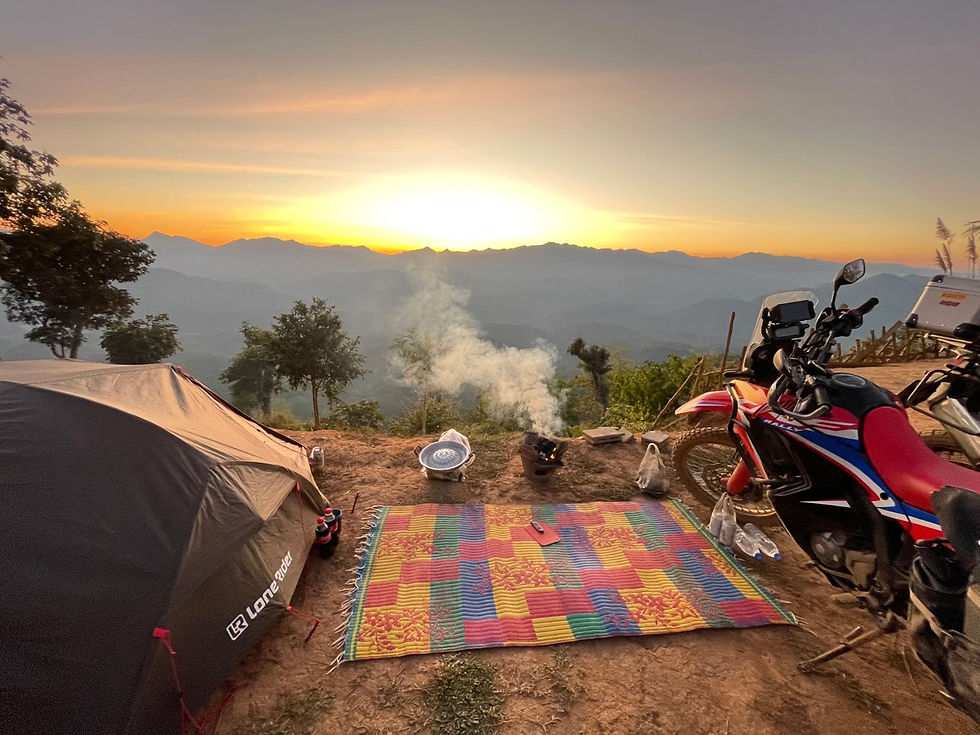
Ohne Probleme ging es aus Laos rüber nach Thailand. Keiner wollte irgendwelche geldlichen Entlohnungen und so ging es über eine sehr motorradfreundliche kurvige und hügelige Straße, die Nr. 1148, zur Stadt Nan. Eine noch nicht touristisch überlaufende und freundlich Stadt süd/östlich von Chiang Rai. Der Nachtmarkt war mal wieder super mit der Besonderheit, dass es einen Platz gibt, an dem man auf dem Boden mit Unterlage und Live-Musik essen kann. Sehr interessant war auch, dass der Müll an einer Abgabestelle strikt getrennt wurde. Sehr vorbildlich ;)
Without any problems we went from Laos over to Thailand. No officer wanted any monetary rewards and so it went over a very motorcycle-friendly winding and hilly road, the road no. 1148, to the city of Nan. A not yet touristy overflowing and friendly town south/east of Chiang Rai. The night market was once again very nice with the peculiarity that there is a place where you can eat on the floor with carpet pads and live music. It was also very interesting that the garbage was strictly separated at a drop-off point. Very exemplary ;)
Aus Nan ging es über eine ebenso schöne Strecke nach Chiang Rai. Bevor wir zur Unterkunft gefahren sind, sind wir erst zu einem der Highlights der Stadt … der „weiße Tempel“. Die Stadt selbst ist auch irgendwie entspannt, aber hat dann für uns auch nicht mehr so viel zu bieten gehabt. So haben wir eine Tagestour zum „golden Triangel“ gemacht. Nördlich von Chiang Rai treffen sich die Länder Thailand, Laos und Myanmar an einem „Dreieck“ und sind nur durch die beiden Flüsse „Mekong“ und „Ruak“ getrennt.
From Nan, we took an equally beautiful route to Chiang Rai. Before we drove to the accommodation, we have been first to one of the highlights of the city ... the "white temple". The city itself is also kind of relaxed, but then also did not have so much to offer for us. That’s why we made a day trip to the "golden triangle" from Chiang Rai. North of Chiang Rai, the countries Thailand, Laos and Myanmar meet at a "triangle" and are separated only by the two rivers "Mekong" and "Ruak".
Ein paar Kurven vom Aussichtspunkt des „goldenen Dreieckes“ weiter haben wir dann noch ein modernes Museum besichtigt. Das Opium Museum. Dort wird die Geschichte des Opiums und des Opiumhandels sehr gut erklärt und dargestellt. Sehr interessant ist, dass die Briten Opium als „Handelsware“ mit China ausgewählt hatten, um Ihren Handelsdefizit mit denen zu schmälern bzw. Gewinn zu erzielen. Irgendwann hatten die Chinesen so viele Opium-Abhängige und so ein großes Haushaltsdefizit, dass Sie sich gegen diesen Handel „gewehrt“ haben. Damit widerherum waren die Briten nicht einverstanden und somit sind die „Opiumkriege“ zwischen den beiden Ländern ab dem Jahr 1839 entstanden. Auf kurze Sicht hatten die Briten die Opiumkriege gewonnen. Thailand/Siam selbst war anscheinend nicht so hart von dem Opiumhandel betroffen, aber auch im Norden Thailands wird/wurde Opium angebaut. Der ganze Herstellungsprozess wurde auch im Museum erklärt ;)
A few turns from the “golden triangle” viewpoint we visited a nice and modern museum. The Opium Museum. There the history of opium and the opium trade is explained and presented very well. It is very interesting that the British had chosen opium as a "trade good" with China to reduce their trade deficit with China and/or to make a profit. At some point, the Chinese had so many opium addicts and such a large budget deficit that China "resisted" this trade. The British, on the other hand, did not agree with this “resistant”, and thus the "Opium Wars" between the two countries began in 1839. In the short run, the British had won the Opium Wars. Thailand/Siam itself was apparently not as hard hit by the opium trade, but opium is/was grown in northern Thailand as well. The whole manufacturing process was also explained in the museum ;)
Unser nächster Halt war dann in Chiang Mai. Wieder ging es über Berge, durch einige Kurven und eher ärmliche Bergdörfer. Man hatte sich kurzzeitig wieder wie im Norden Laos gefühlt...
Our next stop was then in Chiang Mai. Again it went over mountains, through some curves and rather poor mountain villages. One had felt briefly again like in the north of Laos...
Chiang Mai ist der touristische Hotspot im Norden Thailands. Marc und ich waren beide schon einmal vor etlichen Jahren hier und haben eigentlich nicht viel wiedererkannt… schön ist die Stadt aber noch immer. Wir haben uns dort zuallererst um unsere Motorräder gekümmert. Es gab einen Ölwechsel, einen neuen Ölfilter und neue Reifen ;)
Chiang Mai is the tourist hotspot in the north of Thailand. Marc and I have both been there before quite a few years ago and have actually not recognized much anymore... but the city is still beautiful. The first thing we did there was to take care of our motorcycles. We did an oil change, got new oil filters and new tires ;)
Danach haben wir unsere Kochkünste erweitert ;) Der Thai-Kochkurs hat Laune gemacht und mal sehen, was wir davon in der Heimat mal ausprobieren werden…
After that we have expanded our cooking skills ;) The Thai cooking class was fun and let's see what we will try once back home in Germany...
Mit den neuen Reifen und dem frischen ordentlichen Profil haben wir uns dann einen Tag „Enduro-off-road Training“ gegönnt. Mit unserem Trainer „Son“ ging es den Vormittag wirklich in den Busch, um schmale, für uns immer wieder technisch Anspruchsvolle kleine Wege, zu fahren, um dann am Nachmittag noch über steile Passagen ein Bergdorf zu besichtigen…
With the new tires and the fresh neat tyre profile, we then treated ourselves to a day of "Enduro-off-road training". With our trainer "Son" we first went in the morning in the bush to drive narrow, for us again and again technically challenging small tracks and then visit a mountain village in the afternoon over steep passages...
Mit dieser Erfahrung ging es weiter nach „Pai“. Eine Kleinstadt weiter nördlich von Chiang Mai und wohlbekannt unter den meisten Backpackern. Ich (Thilo) war schon einmal vor über 10 Jahren dort und muss schon sagen, dass es sich sehr „weiter“-entwickelt hat. Es hat noch immer seinen entspannten Charm, aber ist nicht mehr die wirklich alternative Backpacker Destination. Wir haben unsere zwei entspannten Tage mit ein wenig Sightseeing, einigem guten „Streetfood“ und 1-2 Kaltgetränken aber sehr genossen. Ganz nett ist, dass in Pai eine Straße jeden Abend um 17:00 Uhr für den Verkehr geschlossen und zur Streetfood-Straße umfunktioniert wird.
With this experience we went on to "Pai". A small town further north of Chiang Mai and well known among most backpackers. I (Thilo) was already once there over 10 years ago and must say that it has developed/changed very much. It still has its relaxed charm but is no longer the real alternative backpacker destination. However, we have enjoyed our two relaxed days with a little sightseeing, some good "street food" and 1-2 cold drinks in any case. Quite nice is that in Pai a street is closed every evening at 17:00 for traffic and converted into a street food street.
Aus Pai ging es auf den „Mae Hong Son Loop“. Einen Rundkurs, der erst weiter in den Norden Thailands führt, um dann mehr oder weniger an der myanmarischen Grenze gen Süden zu gehen. Viele Backpacker leihen sich in Chiang Mai Roller oder Motorräder aus, um die ca. 700km lange Strecke über Pai etc. abzufahren. Wir haben dann auch diese Strecke mit 1-2 Abstechern gewählt, um aber dann nicht wieder nach Chiang Mai zu fahren, sondern weiter gen Süden zu kommen. Einen Abstecher haben wir zu einem See in „Pang Oung“ gemacht. Dort konnten wir endlich mal wieder unser Campingequipment nutzen. Auch waren wir dort auf dem Campingplatz die einzigen westlichen Touris… ;) Hat man selten in Thailand…
From Pai we went on the "Mae Hong Son Loop". A circuit that first leads further into the north of Thailand, then more or less at the Myanmar border to go south. Many backpackers borrow scooters or motorcycles in Chiang Mai to drive the approx. 700km long route via Pai etc.. We have also chosen this route with 1-2 detours, but then not to go back to Chiang Mai, but to drive further south. We made a detour to a lake in "Pang Oung". There we could finally use our camping equipment again. On the campsite we have been the only western tourists... ;) A rare occasion in Thailand...
Beim zweiten Abstecher ging weiter in die Prärie an die myanmarische Grenze. Über einige km dirt/off-road sind wir nach „Mae Sam Leap“ gefahren. Dort, auf rund 700m Höhe, konnten wir unsere Zelte errichten, einen herrlichen Ausblick auf die Berge gegenüber in Myanmar genießen und abends ein thailändisches BBQ uns munden lassen. Und noch besser … morgens einen unglaublichen Blick auf die nebelverhangenen Täler unter uns erblicken! Viel mehr kann man von einem Abstecher nicht erwarten ;)
On the second side trip we went further into the countryside to the Myanmar border. Over some km dirt/off-road we drove to "Mae Sam Leap". There, at about 700m altitude, we could set up our tents, enjoy a magnificent view of the mountains opposite in Myanmar and in the evening enjoying a delicious Thai BBQ. And even better ... in the morning an incredible view of the misty valleys below us! You can't expect much more from a small detour ;)
Zurück ging es dann eine andere Strecke, welche unser Navigationssystem ausgesucht hatte. Es ging nochmals 30km über dirt/off-road weiter bis zur nächsten befestigten kleinen Straße.
Back to the tarmac it went then another route, which our navigation system had selected. It went on again 30km over dirt/off-road to the next paved small road.
Zu unserer Überraschung mussten wir fast auf halber Strecke im Dschungel umdrehen, da unsere Route durch ein bewohntes Dorf führte, welches durch das Militär abgeriegelt ist. Nach ein wenig hin und her und mit dem Versprechen in dem Dorf keine Fotos zu machen, ging die Schranke hoch und wir durften doch passieren… erst bei der Dorfdurchfahrt haben wir festgestellt, dass es ein Flüchtlingsdorf von Menschen aus Myanmar ist. Im Dorf waren Schilder aufgestellt auf denen dann etwas von „Myanmar People Shelter“ stand. Anscheinend wird dieses Dorf im Dschungel an der Grenze zu Myanmar auch von einigen europäische Ländern finanziert, da wir auf diesen Schildern entsprechende europäische Flaggen gesehen haben … wie gesagt, wir konnten ja nicht anhalten und konnten daher nicht alles auf die Schnelle erkennen. Aber es war schon ein bleibender Eindruck ein richtiges Dorf im Dschungel zu sehen, welches auf beiden Seiten mit Schranken und vom Militär abgeriegelt ist, und in dem Flüchtlinge leben. Man muss dazu wissen, dass Myanmar de facto seit 1962 unter einer Militärherrschaft steht. Diese wurde zwar zwischen Februar 2011 und Februar 2021 über demokratische Elemente und einen zivilen Präsidenten als Staatsoberhaupt aufgelockert. Aber seit dem Februar 2021 riss das Militär die gesamte Staatsgewalt wieder an sich und nahm die demokratisch gewählten Volksvertreter fest und verhängte den Notstand. Seitdem gibt es „Unruhen“ im Land und dadurch auch wieder vermehrt Flüchtlinge. Diese ganze traurige Sache ist auch der Grund, warum wir aus Nepal nach Malaysia geflogen sind, da es momentan nicht möglich ist, mit dem eigenen Fahrzeug durch Myanmar zu reisen und so nach Südostasien zu kommen!
To our surprise we had to turn around almost halfway in the jungle, because our route led through an inhabited village, which is sealed off by the military. After a little back and forth and with the promise not to take any photos in the village, the barrier went up and we were allowed to pass... only when passing through the village we realized that it is a refugee village of people from Myanmar. In the village signs were set up on which then something of "Myanmar People Shelter" was written. Apparently, this village in the jungle at the border to Myanmar is also financed by some European countries, because we have seen on these signs corresponding European flags ... as I said, we could not stop and therefore could not recognize everything in a hurry. But it was a lasting impression to see a real village in the jungle, which is sealed off on both sides with barriers and by the military, and in which refugees live. One must know that Myanmar is de facto under military rule since 1962. This was loosened between February 2011 and February 2021 via democratic elements and a civilian president as head of state. But since February 2021, the military seized all state power again, arresting the democratically elected representatives of the people and declaring a state of emergency. Since then, there has been "unrest" in the country and, as a result, more refugees again. This whole sad thing is also the reason why we flew from Nepal to Malaysia, because it is currently not possible to travel with your own vehicle through Myanmar and thus come to Southeast Asia!
Jedenfalls sind wir an jenem Tag noch in der Stadt „Mae Sot“ angekommen. Nach einer Übernachtung ging es dann am folgenden Tag weiter zur Tempelanlage in „Si Satchanalai“. Diese hat uns von Ihrer Art her ein wenig an „Angor Wat“ in Kambodscha erinnert, war weitläufig und nur wenig von Touristen frequentiert.
Anyway, on that day we still arrived in the city of "Mae Sot". After an overnight stay, we continued the following day to the temple complex in "Si Satchanalai". The area has reminded us a little of "Angor Wat" in Cambodia, it was extensive and only little frequented by tourists.
Auf den Weg nach Bangkok haben wir dann noch Zwischenstopps in „Lupburi“, wo wir uns mit Stöcken ausgerüstet den Affentempel angesehen haben, und „Ayutthaya“ gemacht. „Ayutthaya“ war von 1351 bis 1767 Hauptstadt des siamesischen Königreichs „Ayutthaya“ und im 18. Jahrhundert die wichtigste Metropole des südostasiatischen Festlands. Und daher gibt es einige alte Tempelanlagen zu besichtigen. Dort waren dann durch die Nähe nach „Bangkok“ sehr viele Touristen.
On the way to Bangkok, we made stops in "Lupburi", where we visited with sticks in our hand the monkey temple, and "Ayutthaya". "Ayutthaya" was the capital of the Siamese kingdom of "Ayutthaya" from 1351 to 1767 and the most important metropolis of mainland Southeast Asia in the 18th century. And therefore, there are some old temples to visit. There were then a lot of tourists due to the proximity to "Bangkok".
In „Bangkok“ selber haben wir dann alte Bekannte wiedergetroffen. Die beiden Motorradreisenden aus England, welche wir zum ersten Mal in Kambodscha getroffen hatten… Also ging es auf 1-2 Getränke in die Nähe der „Khao San Road“. Und dort, quasi auf der Straße, hat uns eine französische Familie wiedererkannt. Diese Familie hatten wir in einem Hotel in Indien bei dem „Ranthambore National Park“ gesprochen… so waren wir am Ende eine etwas größere illustre Runde ;) So kann es laufen in Bangkok ;)
In "Bangkok" itself, we met previous acquaintances again. The two motorcycle travelers from England, which we had met for the first time in Cambodia... So, we went on 1-2 drinks near the "Khao San Road". And there, on the street, a French family recognized Marc and me. This family we had spoken to in a hotel in India near the "Ranthambore National Park"... it means we were in the end a somewhat larger illustrious round and having 1-2 gin tonics ;) Such things can happen in Bangkok ;)
Ansonsten haben wir in „Bangkok“ noch ein wenig Sightseeing gemacht und ein wenig entspannt. Auch haben wir uns während der Zeit in Bangkok entschieden, wie der Weg zurück nach Europa aussehen soll. Mal sehen, ob unser Plan am Ende aufgeht… Ihr werdet es mitbekommen ;)
Otherwise, we did some sightseeing in "Bangkok" and relaxed a little bit. Also, we have decided during the time in Bangkok, how the way back to Europe should look like. Let's see if our plan works out in the end... You'll see ;)
Aus „Bangkok“ ging es jedenfalls mit ein paar Stopps wieder zurück nach Malaysia. Wir haben uns eine Brücke in „Kanchanaburi“ angeschaut, welche im 2. Weltkrieg von amerikanischen Kriegsgefangenen der Japaner gebaut wurde. Auch bekannt durch den Hollywoodfilm „Die Brücke am Kwai“ aus dem Jahre 1957.
Anyway, from "Bangkok" we went back to Malaysia with a few stops. We looked at a bridge in "Kanchanaburi", which was built in the 2nd World War by American prisoners of the Japanese. Also known by the Hollywood movie "The Bridge on the River Kwai" from 1957.
Danach wollten wir in den Nationalpark „Kaeng Krachan“ fahren, um dort zu Zelten. Vor Ort haben wir dann aber erfahren, dass Motorräder nicht hineingelassen werden und so wurde dort nur eine Nacht in einem Bungalow vor dem Nationalpark verbracht. Das nächste Ziel war dann der Nationalpark „Khao Sam Roi Yot“. Dieser liegt direkt am Meer/Strand. Dort haben wir dann für 2 Nächte unsere Zelte aufgebaut und die Umgebung erkundschaftet… war als Alternative auch „ok“ ;)
Afterwards we wanted to go to the national park "Kaeng Krachan" to camp there. On site, however, we then learned that motorcycles are not allowed in and so only one night was spent there in a bungalow in front of the national park. The next destination was then the national park "Khao Sam Roi Yot". This is located directly at the sea/beach. There we have then set up our tents for 2 nights and explored the surroundings... which was also "ok" as an alternative ;)
Erkundschaftet bedeutete, dass Marc sich einen Vormittag die nahegelegenen Höhlen angeschaut hat und wir noch den „Kui Buri Nationapark“ mit freilebenden Elefanten besichtigt haben.
Explored meant that Marc spent a morning looking at the nearby caves and we together visited the "Kui Buri National Park" with loose elephants.
Danach ging es weiter gen Süden. Wir sind über die Stadt „Pantong“, auf der sehr touristische Insel Phuket, weiter Richtung „Krabi“ nach „Ao Nang“ gefahren. „Phuket“, vor allen Dingen die Stadt „Pantong“, hat alle negativen Klischees des Massentourismus in Thailand erfüllt. Muss man wirklich nicht hin… Aber immerhin haben wir die Zeit dort genutzt, um einen Abend Muay Thai Kämpfe in einem Stadion zu sehen. War schon interessant zu sehen, wie schnell und kraftvoll die Kämpfe live rüberkommen. In „Ao Nang“ (bei „Krabi“) war es auch touristisch, aber schon um einiges entspannter. Zudem haben wir Max aus Deutschland, welchen wir auf Don Det in Laos kennengelernt hatten, auf der Straße unverhofft wiedergetroffen und 1-2 Biere mit Ihm getrunken ;)
After that we went further south. We went via the city of "Pantong", on the very touristy island of Phuket, further towards "Krabi" to "Ao Nang". "Phuket", especially the city of "Pantong", has fulfilled all the negative clichés of mass tourism in Thailand. You really don't have to go there... But at least we used the time there to see one evening Muay Thai fights in a stadium. It was interesting to see how fast and powerful the fights come across live. In "Ao Nang" (near Krabi) it was also touristy, but already a lot more relaxed. In addition, we met Max from Germany, whom we had met on Don Det in Laos, unexpectedly on the street and enjoyed 1-2 beers with him ;)
Von dort ging es mit einem Übernachtungsstopp zu einer kleineren Grenzstation zwischen Thailand und Malaysia. Dort sind wir ohne Probleme nach rund 30 Tagen in Thailand wieder zurück nach Malaysia eingereist.
From there we went with an overnight stop to a smaller border station between Thailand and Malaysia. Finally we entered without problems after about 30 days in Thailand back to Malaysia.
Mal sehen, ob wir in Malaysia den Rücktransport der Motorräder näher an unsere Heimat organisieren können.
Let's see if we can organize the return transport of the motorcycles closer to home in Malaysia.
Uns geht es gut! Bis bald! We'll be fine and see you soon!


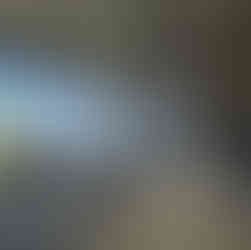













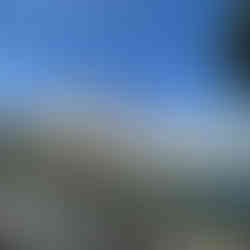


















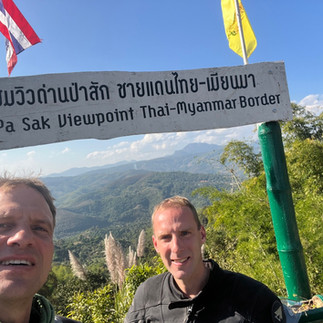





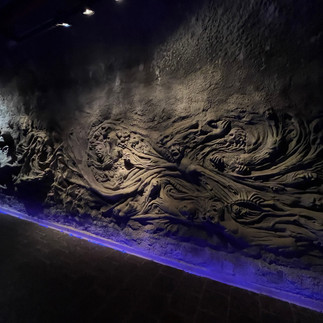
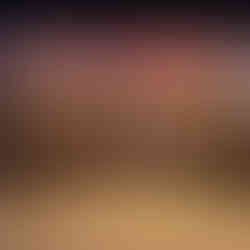


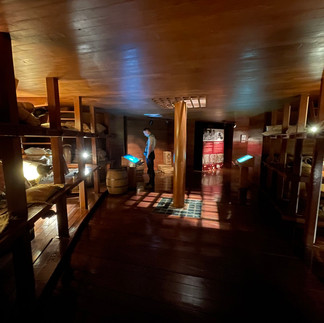

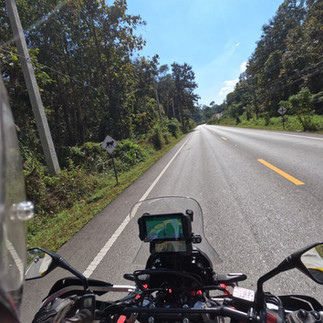





































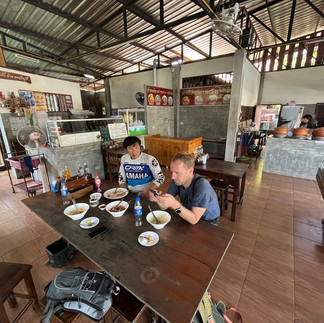
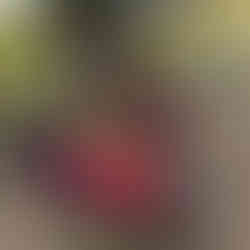






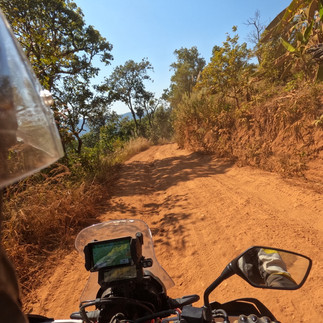


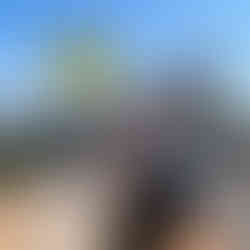


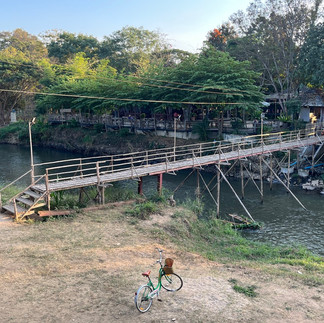
























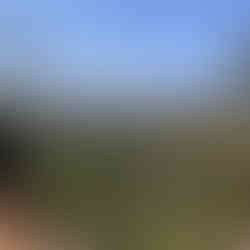




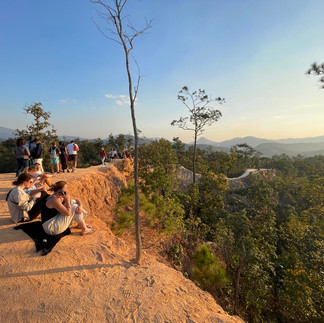



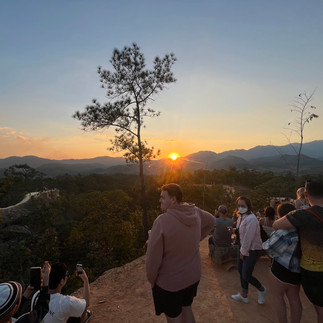






























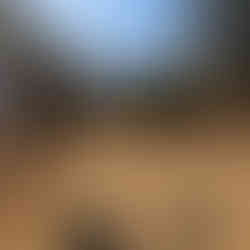





















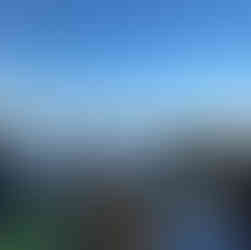






















































































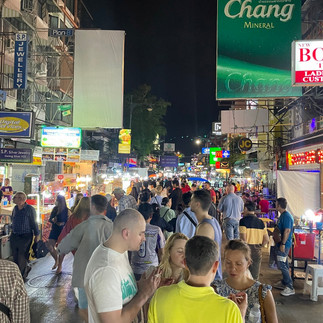






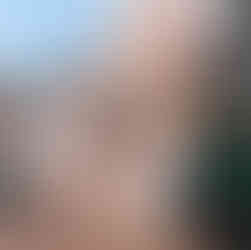














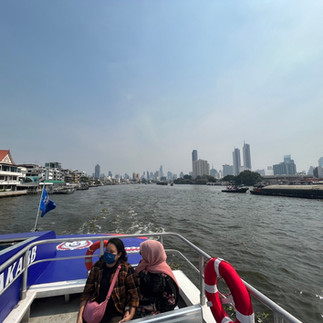







































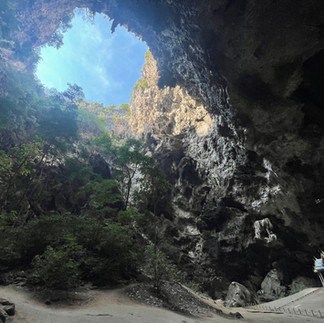




















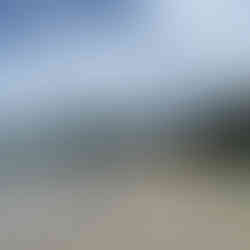















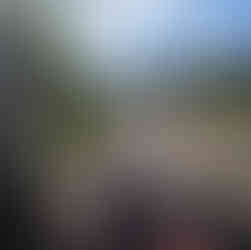























Comentarios